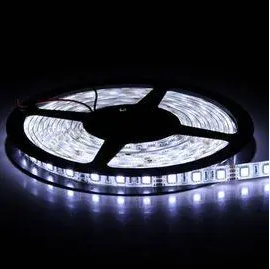Ensuring the quality and reliability of LED strip lights is paramount for manufacturers. Here’s an in-depth look at how a top-tier LED strip light factory rigorously tests its products to meet high standards of performance and durability.
Initial Quality Checks
Before the actual assembly process, the quality testing begins with the inspection of raw materials. A leading led strip light factory typically examines components such as LEDs, PCBs (Printed Circuit Boards), resistors, and connectors for any defects. This might involve visual inspections and mechanical testing to ensure that each component meets the factory’s stringent standards.
Electrical Testing
Once the LED strip lights are assembled, they undergo several electrical tests. These include:
- Voltage and Current Testing: To ensure that LED strips operate at specified voltage and current levels, thereby guaranteeing optimal performance and preventing overheating or premature failure.
- Continuity Testing: This test checks for electrical continuity along the strip to ensure that there are no breaks in the circuit path that could lead to segments of the strip not lighting up.
Thermal Management Testing
Temperature plays a crucial role in the lifespan and efficiency of LED lights. Factories use thermal cameras and sensors to monitor the heat generation and dissipation of the LED strips during operation. Strips are often tested in temperature-controlled environments to simulate various operational conditions. The goal is to ensure that the strips maintain their integrity and performance under the temperatures they will encounter in real-world applications.

Weather and Water Resistance Testing
For LED strip lights that are advertised as water-resistant or suitable for outdoor use, rigorous weatherproofing tests are conducted. These tests might include:
- Water Immersion Tests: To verify that the strips are waterproof, they may be submerged in water for extended periods to check for any ingress that could damage the circuitry.
- Environmental Simulation: This involves using environmental chambers to expose the LED strips to various conditions including rain, humidity, and extremes of heat and cold.
Lifespan and Durability Testing
To estimate the lifespan of LED strips, factories conduct accelerated life testing. These tests subject the LED strips to continuous operation under heightened stress conditions to simulate years of usage within a short period. Data from these tests help in predicting the operational lifespan and identifying any potential long-term issues with light output degradation or component failure.
Photometric and Colorimetry Testing
Accurate color rendering and brightness levels are critical for many applications of LED strip lighting. Photometers and colorimeters are used to measure the light output and color accuracy of the strips. These devices help ensure that the LED strips provide consistent illumination and color across different batches, which is vital for applications requiring precise lighting conditions.
Final Inspection and Quality Assurance
Before shipping, every batch of LED strip lights undergoes a final inspection. This comprehensive review includes visual, mechanical, and functional testing to ensure that every product shipped meets the quality standards expected by customers.
A Commitment to Excellence
By implementing such thorough testing procedures, a leading LED strip light factory not only ensures the reliability and safety of its products but also reinforces its commitment to delivering superior lighting solutions. This rigorous approach to quality assurance is what separates top manufacturers from the competition, providing customers with the confidence that their lighting investments are sound and reliable.